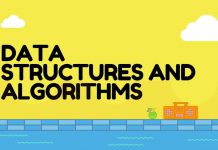Coding Interview is a crucial stage in terms of selection before achieving the final feat in the world of coding. Edureify brings to you the best Top 20 questions and answers which will also serve as your Interview guide 2024. Go through all the questions and answers carefully and it will be really helpful in cracking any coding interview 2024.
If you have any further questions , please visit our https://edureify.com/aimentor/answer link.
1. What is a closure in JavaScript?
Answer: A closure is a function that retains access to its lexical scope even when the function is executed outside that scope. It allows the function to remember the variables from the scope where it was created.
2. Explain the concept of promises in JavaScript.
Answer: Promises represent the eventual completion (or failure) of an asynchronous operation and its resulting value. They provide a way to handle asynchronous operations more easily than traditional callback-based approaches.
3. What is the difference between == and === in JavaScript?
Answer: == is the equality operator, which compares two values for equality after converting both values to a common type (type coercion). === is the strict equality operator, which compares both the value and the type without performing type conversion.
4. What is a pure function?
Answer: A pure function is a function that, given the same input, will always return the same output and does not have any side effects, meaning it does not alter any external state.
5. What is the time complexity of binary search?
Answer: The time complexity of binary search is O(log n), meaning it reduces the problem size by half with each step.
6. Explain the difference between const, let, and var in JavaScript.
Answer:
varis function-scoped and can be redeclared and updated within its scope.letis block-scoped and can be updated but not redeclared within its scope.
7. What is the purpose of the useEffect hook in React?
Answer: The useEffect hook lets you perform side effects in function components. It serves the same purpose as lifecycle methods like componentDidMount, componentDidUpdate, and componentWillUnmount in React class components.
8. How do you reverse a linked list?
Answer: To reverse a linked list, you can iterate through the list and change the next pointers of each node to point to the previous node, effectively reversing the direction of the list.
9. What is memoization?
Answer: Memoization is an optimization technique where you store the results of expensive function calls and return the cached result when the same inputs occur again, thereby saving computation time on repeated calls.
10. Explain the difference between depth-first search (DFS) and breadth-first search (BFS).
Answer:
- DFS explores as far as possible along each branch before backtracking, using a stack (or recursion) for implementation.
11. What is a higher-order function in JavaScript?
Answer: A higher-order function is a function that takes another function as an argument, returns a function, or both. Examples include functions like map, filter, and reduce.
12. What is the difference between synchronous and asynchronous programming?
Answer:
- Synchronous programming executes tasks sequentially; each task waits for the previous one to complete.
13. How do you implement a stack using an array in JavaScript?
Answer: A stack can be implemented using an array by using the array’s push method to add elements to the top of the stack and the pop method to remove elements from the top of the stack.
14. What is a callback function?
Answer: A callback function is a function passed into another function as an argument, which is then invoked inside the outer function to complete some kind of routine or action.
15. What is the Big-O notation of an algorithm that doubles the input size?
Answer: The Big-O notation for an algorithm that doubles the input size is O(2^n), which indicates exponential growth in relation to the input size.
16. Explain what a hash table is.
Answer: A hash table is a data structure that implements an associative array, mapping keys to values. It uses a hash function to compute an index into an array of buckets or slots, from which the desired value can be found.
17. What is tail recursion?
Answer: Tail recursion is a recursion where the recursive call is the last operation in the function. It allows optimizations by reusing the current function’s stack frame, leading to improved performance and reduced memory usage.
18. What is the use of async and await in JavaScript?
Answer: async and await are used to handle asynchronous operations in a more synchronous fashion. async makes a function return a promise, and await pauses the execution until the promise is resolved, allowing for easier and more readable asynchronous code.
19. How do you check if a binary tree is balanced?
Answer: A binary tree is balanced if the height of the two subtrees of any node never differ by more than one. This can be checked using a recursive function that computes the height of subtrees and verifies the balance condition.
20. What is a RESTful API?
Answer: A RESTful API is an API that adheres to the principles of REST (Representational State Transfer). It uses standard HTTP methods and is stateless, allowing for easy, scalable communication between client and server.
Master Your Coding Skills with BootSelf AI
If you're looking to enhance your coding abilities and upskill in artificial intelligence, look no further than the BootSelf AI app. This innovative platform provides AI-based coding lessons that are tailored to your individual learning pace.
Available on both iOS and Android, you can download the BootSelf AI app and start mastering coding skills today:












